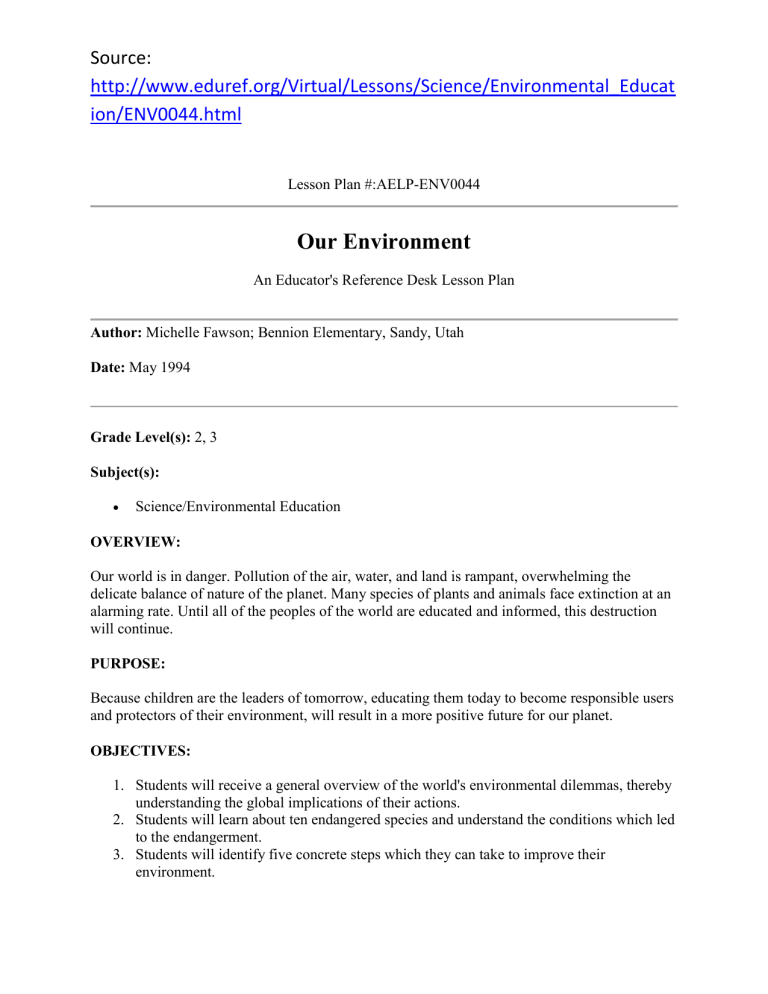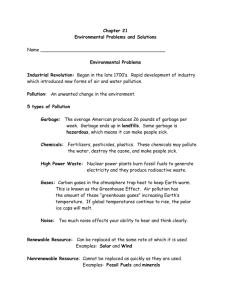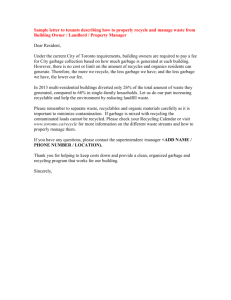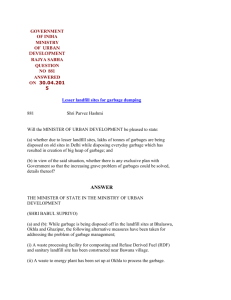Lesson Plan #:AELP

Source: http://www.eduref.org/Virtual/Lessons/Science/Environmental_Educat ion/ENV0044.html
Lesson Plan #:AELP-ENV0044
Our Environment
An Educator's Reference Desk Lesson Plan
Author: Michelle Fawson; Bennion Elementary, Sandy, Utah
Date: May 1994
Grade Level(s): 2, 3
Subject(s):
Science/Environmental Education
OVERVIEW:
Our world is in danger. Pollution of the air, water, and land is rampant, overwhelming the delicate balance of nature of the planet. Many species of plants and animals face extinction at an alarming rate. Until all of the peoples of the world are educated and informed, this destruction will continue.
PURPOSE:
Because children are the leaders of tomorrow, educating them today to become responsible users and protectors of their environment, will result in a more positive future for our planet.
OBJECTIVES:
1.
Students will receive a general overview of the world's environmental dilemmas, thereby understanding the global implications of their actions.
2.
Students will learn about ten endangered species and understand the conditions which led to the endangerment.
3.
Students will identify five concrete steps which they can take to improve their environment.
Source: http://www.eduref.org/Virtual/Lessons/Science/Environmental_Educat ion/ENV0044.html
4.
Students will select a project which will improve their environment and complete it. Each student will present his/her project to the class in a creative or imaginative way.
ACTIVITIES AND PROCEDURES:
Introduction:
Teacher will read the poem by Shel Silverstein, "Sarah Cynthia Sylvia Stout Would Not Take the
Garbage Out." The class will then discuss the implications of the poem, the mounting garbage, and move the discussion toward the concept of disposal of the garbage. The class will then discuss the idea of all people in the world's garbage and its' size and volume.
Students will then have a variety of activities to teach them about the plight of our environment:
1.
Collect the garbage cans from different classrooms. Categorize and graph it. The class will then calculate the weekly, monthly and yearly volume of each type of material, i.e., newsprint, copier paper, construction paper, etc.
2.
Students will collect newspaper and magazine articles and share them with the class. The class will then make posters about the different issues of the environment, using the articles and making their own illustrations and lettering.
3.
100 Simple Things You Can Do To Save The Earth will be read by the teacher to the students.
4.
The class will take a field trip to a recycling center.
5.
The class will learn the songs and put on the play from the "Earth Day 1990 Teaching
Packet".
6.
The student will learn about the endangered species from the "Earth Day 1990, 1991
Packets". Students will be divided into teams to create a board game for a selected endangered specie.
7.
Students will make signs for each classroom in the building to remind them to turn out the lights and turn off the water when not in use. Recycled paper will be used.
TYING IT ALL TOGETHER:
During the entire period of the unit, students will be encouraged to write down the problems which are identified on a chart posted on the door. As the unit evolves, the list will grow. For the culminating activity, groups of four students will select one of the problems from the list and brainstorm many and varied solutions. The group will then decide which solution will be the most appropriate for their group to work on. The group will plan the steps which need to be taken to achieve the best results and implement their plan. The group will then present their project to the class in a creative manner.
Source: http://www.eduref.org/Virtual/Lessons/Science/Environmental_Educat ion/ENV0044.html
May 1994
These lesson plans are the result of the work of the teachers who have attended the Columbia
Education Center's Summer Workshop. CEC is a consortium of teacher from 14 western states dedicated to improving the quality of education in the rural, western, United States, and particularly the quality of math and science Education. CEC uses Big Sky Telegraph as the hub of their telecommunications network that allows the participating teachers to stay in contact with their trainers and peers that they have met at the Workshops.







